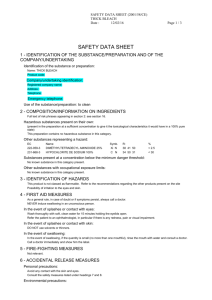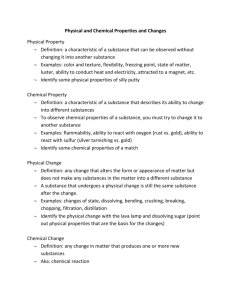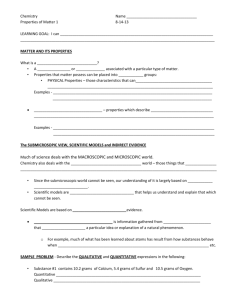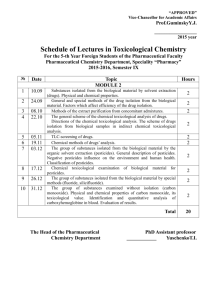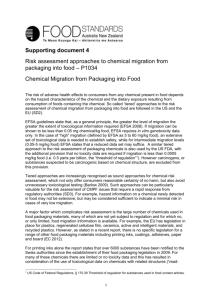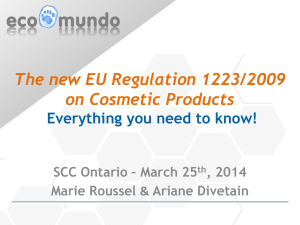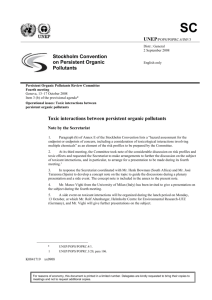Additional file 1
advertisement
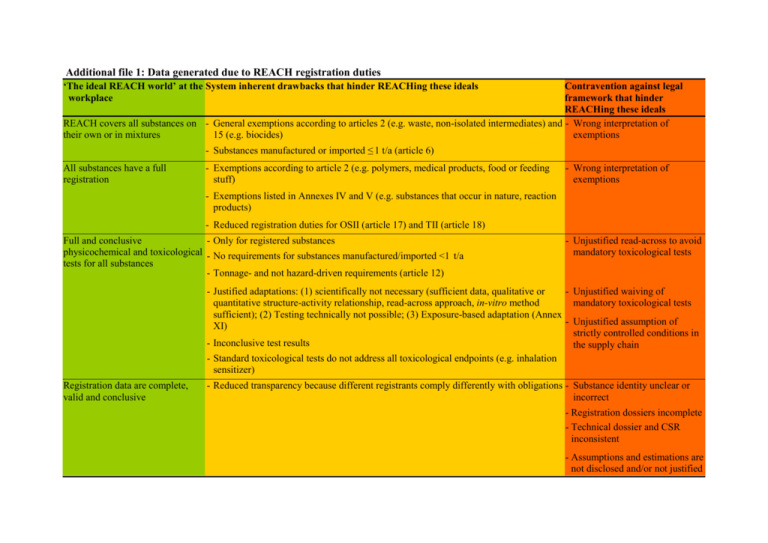
Additional file 1: Data generated due to REACH registration duties ‘The ideal REACH world’ at the System inherent drawbacks that hinder REACHing these ideals workplace Contravention against legal framework that hinder REACHing these ideals REACH covers all substances on - General exemptions according to articles 2 (e.g. waste, non-isolated intermediates) and - Wrong interpretation of their own or in mixtures 15 (e.g. biocides) exemptions - Substances manufactured or imported ≤ 1 t/a (article 6) All substances have a full registration - Exemptions according to article 2 (e.g. polymers, medical products, food or feeding stuff) - Wrong interpretation of exemptions - Exemptions listed in Annexes IV and V (e.g. substances that occur in nature, reaction products) - Reduced registration duties for OSII (article 17) and TII (article 18) Full and conclusive - Only for registered substances physicochemical and toxicological - No requirements for substances manufactured/imported <1 t/a tests for all substances - Tonnage- and not hazard-driven requirements (article 12) - Unjustified read-across to avoid mandatory toxicological tests - Justified adaptations: (1) scientifically not necessary (sufficient data, qualitative or - Unjustified waiving of quantitative structure-activity relationship, read-across approach, in-vitro method mandatory toxicological tests sufficient); (2) Testing technically not possible; (3) Exposure-based adaptation (Annex - Unjustified assumption of XI) strictly controlled conditions in - Inconclusive test results the supply chain - Standard toxicological tests do not address all toxicological endpoints (e.g. inhalation sensitizer) Registration data are complete, valid and conclusive - Reduced transparency because different registrants comply differently with obligations - Substance identity unclear or incorrect - Registration dossiers incomplete - Technical dossier and CSR inconsistent - Assumptions and estimations are not disclosed and/or not justified




